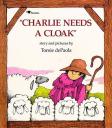In elementary school, students are learn about human, natural, and capital resources as part of their economics unit. These resources are closely related to the student’s study of goods and services. Human resources are defined as people who work to provide services or to produce goods.
Books

Abuela’s Weave is a story that follows Esperanza and her Abuela as they work hard on their weaving to prepare goods to sell in the village. They live in a small, market town in Guatemala and must provide for their family with the money that they make. This story is a great way to illustrate the process of producing a good and how the end result plays out.

The book How Santa Got His Job follows Santa from the beginning of his career, to his final job as the Santa Claus we know today. It begins with him as a chimney sweeper, and details his journey from job to job, as he learns many different skills that eventually lead to him becoming Santa Claus. For example, he works at the post office to learn about delivering packages, he works at the zoo, where he falls in love with reindeer, and so on. This is a great book to illustrate how different types of human resources require very specific skills, many of which are learned skills.

Human resources typically are working to provide a service or create a product. In this book, students can explore how one good (in this case, a book) goes through many different stages of production and requires lots of human resources. The author, Aliki, has provided two different levels of text. The big text is very basic and follows the simple story line, while the smaller text is much more detailed and describes the finer points of book production. This would be a great way to use the book for various ages or to differentiate a classroom.

Eric Carle uses his whimsical collage-style illustration to tell the story of Walter the baker in this book. Walter is the main baker for the Duke and Duchess of his home town and his specialty is his sweet rolls. When he gets to asked to make a type of roll that the sun can shine through three times, he must rush to meet the challenge. The story follows his journey of producing the new type of roll, which in turn illustrates how a human resource (the baker) uses specific skills to produce a product.

All of Charlie’s friends and family tell him that he needs a new cloak. He is a poor shepherd so he cannot afford to buy himself a new one – he decides instead to make one! The story follows his production of a beautiful new red cloak, from shearing his sheep to weaving and dying the cloth to sewing the actual cloak. The idea that specific skills are required to make various products is reiterated for students in this book.
Websites
1. In this website, students can explore different jobs and what those jobs entail. It also helps students understand that different human resources play different roles in our community.
2. In this matching game, the students must match the human resource with their role in the community. It is an interesting way for students to explore the different skills required for jobs.\
3. This site is a huge database of jobs that are sorted by skill and interest. Students can go to the site, choose a subject area or area of interest, and then the site guides them through many different career options. This could be part of a fun webquest!
4. This is another matching game, but this time the students must explore which human resource pairs up with which capital resource.
5. Here is a webquest that allows students not only to explore human resources, but also the concepts of natural resources, capital resources, and goods and services. In the end, students create a simple product and must present and advertise it to the class.
Additional Resources
1. This is a great lesson plan based on the book The Tortilla Factory by Gary Paulsen. The lesson reviews capital, natural, and human resources and includes a fun craft.
2. Another great lesson plan, this activity takes students through the process of making crayons. Crayons are something that all kids love and can relate to, and it’s a process that they may not know about. The lesson focuses on how resources are used in the crayon production.
3. This upper elementary lesson plan helps students explore different jobs and what those jobs entail. As they read about different jobs around the community, they begin to understand how specific the skills are for each human resource in our community.
4. For lower elementary students, this lesson plan is a great way to familiarize them with the concepts of natural, capital, and human resources. The lesson plan focuses on a very well known story – The Three Little Pigs!
